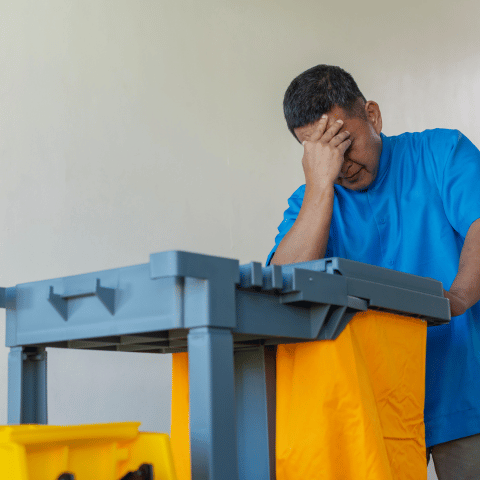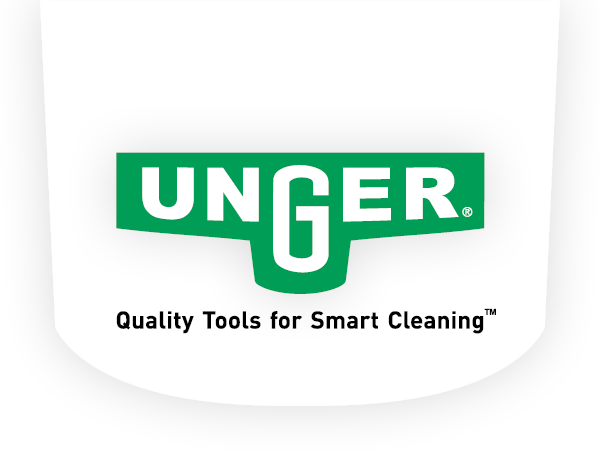NEW! Powerful Nano Filtration with Unger's HydroPower® Nano See The Product

Preventing Burnout Among Cleaning Professionals
Given a cleaning industry landscape marked by staffing shortages, heavy workloads, and insufficient time for training, it’s no wonder the industry is seeing burnout from more and more cleaning professionals. According to the CloroxPro 2023 Clean Index Report, an overwhelming 87% of the 1700 cleaning professionals surveyed reported experiencing burnout in the past two years.
For facility managers, this finding highlights the need to implement a multi-faceted plan that addresses both the physical and organizational factors that contribute to burnout. With an effective plan focused on deterring burnout, facility managers must show support for overall employee well-being while remaining diligent in their role to safeguard public health.
Recommendations to Decrease Employee Burnout
Burnout extends beyond simply feeling that you’re overworked; it’s linked to the conditions in which you work. Here’s what you can do to address both the workload and the working environment:
- Promote a Healthy Work Environment
Promoting a healthy work environment requires facility managers to take a proactive interest in creating ways that help cleaning professionals do their jobs safely with minimal risk. For instance, investing in ergonomic commercial cleaning equipment can minimize the physical effort required to use it. One example is an adjustable handle on a
Ensuring that cleaning staff receive comprehensive training on the safe use of cleaning chemicals, equipment, and proper cleaning techniques also helps to reduce the risk of injury or health issues. When possible, choosing environmentally friendly, non-toxic cleaning products that are less harmful to both the cleaning staff and the environment promotes better health. For any cleaning chemicals, make sure to provide Material Safety Data Sheets (MSDS) and ensure that staff can easily access them.
- Foster a Positive Workplace Culture
Whether it’s verbal praise, written letters of thanks, or public accolades, regularly recognizing employees’ hard work and achievements is important when developing a positive work culture. Strategies that support this goal can include such things as an employee of the month program that highlights exceptional employees, giving them public recognition and/or tangible rewards. You can also make it a point to:
– Continually acknowledge work anniversaries, birthdays, and personal milestones to make employees feel valued and appreciated.
– Encourage communication through regular team meetings, suggestion boxes, or an open-door policy.
– Implement wellness programs that support both physical and mental health.
– Promote a healthy work-life balance by offering adequate breaks and sufficient time off.
Recognition is especially important given that 61% of those surveyed in the Chlorox study cited that hiring issues and short staffing are leading contributors to staff burnout. And in times of understaffing, 43% of workers stated that they have considered quitting their jobs in the last three months. As a facility manager dealing with a shortage of cleaning professionals, understanding why employees leave is crucial to reducing turnover. Through feedback and survey tools, you can gauge how your team feels and get ahead of any issues and areas for improvement before they negatively impact employee morale to the point of turnover.
- Provide Adequate Training and Development
In the Chlorox Study, 44% of respondents said there was not enough time for training, which is a leading contributor to staff burnout. Continuous training ensures that cleaning professionals are up to date on the latest techniques, tools and best practices, resulting in improved performance and productivity. Additionally, offering professional growth and development opportunities, such as training programs, workshops, and career advancement, is important in fostering a motivated and engaged workforce. This not only helps in retaining desirable employees but also equips them with the knowledge and skills needed to take on new challenges and responsibilities when needed. It also supports the goal of staying current with industry best practices in cleaning and institute standard operating procedures.
- Manage Workloads Effectively
According to the Chlorox report, 40% of respondents say long hours are a leading contributor to staff burnout. Burnout because of high turnover and continued staffing shortages can result in a cycle of longer work hours. Being mindful of scheduling, avoiding excessive overtime and considering cross training and/or rotating cleaning duties can help manage the workloads of the custodial team.
Implementing zone cleaning – a method where specific teams are assigned to a particular area or zone of a facility – is one option that can further optimize workflow and ensure thorough coverage. This approach can improve the quality of cleaning and foster a sense of ownership and teamwork among employees, leading to a more harmonious and effective workplace.Not every facility is a candidate for zone cleaning and so you’ll need to evaluate whether zone or team cleaning works best for your facility. Choosing the right method will save your team time and money.
- Utilize Innovation
Custodians often have a demanding workload, especially in large or high-traffic facilities. They may struggle to keep up with cleaning tasks, which can lead to stress and fatigue. If a custodial team operates with limited staff, it is even more difficult to accomplish all the cleaning duties required.
To help combat this issue, facility managers should consider commercial cleaning equipment that is designed with speed, efficiency and safety top of mind. For example, ergonomic janitor carts designed with compartments and holders that reduce the need for bending and reaching, make it easier to transport and access cleaning supplies. Chemical-free cleaning solutions, such as innovative pure water window cleaning systems, also keep cleaning professionals away from potentially harmful cleaning agents.
Implementing these strategies not only helps in preventing burnout among cleaning professionals but also enhances job satisfaction, productivity, and the overall quality of service provided. As we move forward, prioritizing the health and happiness of cleaning professionals will be crucial in maintaining a resilient and dedicated workforce committed to safeguarding public health.
